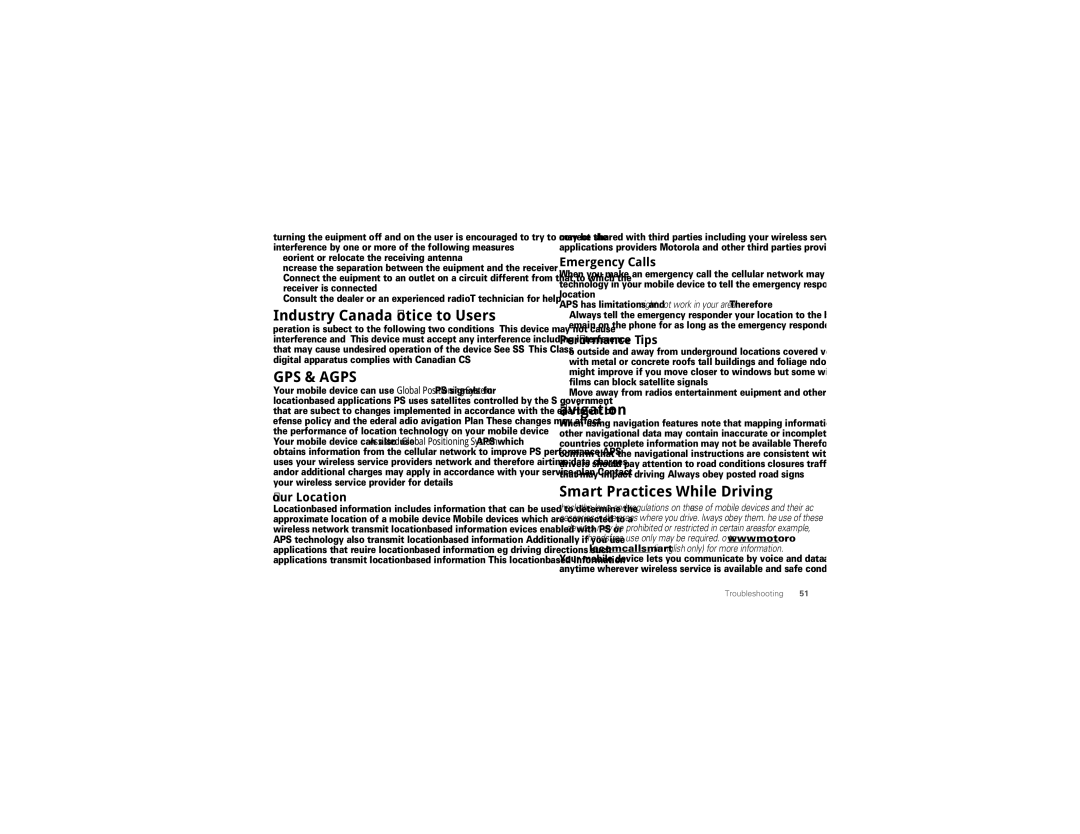turning the equipment off and on, the user is encouraged to try to correct the interference by one or more of the following measures:
•Reorient or relocate the receiving antenna.
•Increase the separation between the equipment and the receiver.
•Connect the equipment to an outlet on a circuit different from that to which the receiver is connected.
•Consult the dealer or an experienced radio/TV technician for help.
Industry Canada Notice to Users
Operation is subject to the following two conditions: (1) This device may not cause interference and (2) This device must accept any interference, including interference that may cause undesired operation of the device. See
GPS & AGPS
Your mobile device can use Global Positioning System (GPS) signals for
Your mobile device can also use Assisted Global Positioning System (AGPS), which obtains information from the cellular network to improve GPS performance. AGPS uses your wireless service provider's network and therefore airtime, data charges, and/or additional charges may apply in accordance with your service plan. Contact your wireless service provider for details.
Your Location
may be shared with third parties, including your wireless service provider, applications providers, Motorola, and other third parties providing services.
Emergency Calls
When you make an emergency call, the cellular network may activate the AGPS technology in your mobile device to tell the emergency responders your approximate location.
AGPS has limitations and might not work in your area. Therefore:
•Always tell the emergency responder your location to the best of your ability; and
•Remain on the phone for as long as the emergency responder instructs you.
Performance Tips
•Go outside and away from underground locations, covered vehicles, structures with metal or concrete roofs, tall buildings, and foliage. Indoor performance might improve if you move closer to windows, but some window sun shielding films can block satellite signals.
•Move away from radios, entertainment equipment, and other electronic devices.
Navigation
When using navigation features, note that mapping information, directions and other navigational data may contain inaccurate or incomplete data. In some countries, complete information may not be available. Therefore, you should visually confirm that the navigational instructions are consistent with what you see. All drivers should pay attention to road conditions, closures, traffic, and all other factors that may impact driving. Always obey posted road signs.
Smart Practices While Driving
Check the laws and regulations on the use of mobile devices and their ac- cessories in the areas where you drive. Always obey them. The use of these devices may be prohibited or restricted in certain
Your mobile device lets you communicate by voice and
Troubleshooting 51
